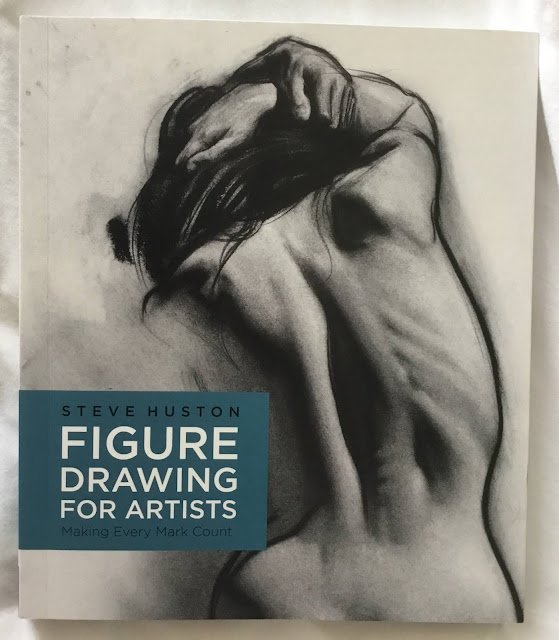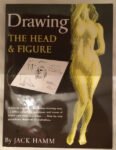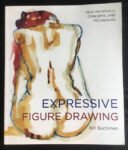And now for something completely different. A book that can't be read. This isn't a…

Figure Drawing For Artists: Making Every Mark Count, Steve Huston – Book Review
Time for another book review. This is 192 pages long, and is flexibound, meaning it’s a paperback but with a cover that’s bent inwards along the edge. It feels big and substantial.
I knew I was talking a risk putting both this and the Chris Legaspi book on my wishlist. If both of them were bought for me, would there be a significant overlap between the two? The problem was they both sounded and looked good, so I couldn’t decide which to leave off the list. So I left them both on the list. Probably hoping to only be gifted one of them to be honest.
And, as it turned out, both of them popped up as presents on my birthday. I read and reviewed the Legaspi book a week or two ago (and gave if four stars) and have now read the Huston book. So how do they compare?
Well, the big news is that these are two very different books. They both emphasise the importance of gesture and structure but after that there are not many similarities. The main focus of Chris’ book is on a process for doing drawings and on how much can be done depending in how long the model is posing for. Steve’s book is different.
Steve starts off with about 90 pages of what I’d call introduction. What gesture drawing is, how to draw spheres, cylinders and cuboids, how light works. I found this all to be quite slow going and wasn’t learning much from it, although I did feel Steve’s passion coming through. The most interesting thing from this bit of the book was how Steve’s style differs to Chris’. Chris likes to put down all the gesture lines, then add structure, whereas Steve alternates between laying down quite short gestures, and adding structure. So head gesture, head structure, back gesture, back structure, chest gesture, chests structure,… – you get the picture. Interesting, and as Steve keeps emphasising everybody’s different and we’re welcome to vary from his recommendations. I also liked Steve’s concept of a wave of gestures going down the body.
After that we’ve got about 90 pages on the human body and about 10 pages on shading. The bit on shading was a bit hurried and difficult to follow but the Chris Legaspi book is pretty good in this area, so that’s not a problem to me. In fact, Steve probably underdoes the importance of shading in his book, preferring to concentrate in gesture and structure.
But those 90 pages on the human body. Wow! While I didn’t learn much from the first 90 or last 10 pages, this 90 page section was packed to the roof with useful advice. Steve went all over the human body and described how it could be drawn as simple or more complicated shapes. I did like his imagery, likening certain parts of the body to twisted ropes, notches in whistles, Donald Duck bills and the way that a baggy shirt hangs over a big belt buckle. Imagery that rams the point home and makes sure it won’t be forgotten. The drawings in this bit of the book are also nice and simple, only showing what’s needed to illustrate Steve’s points. This 192-page long book had more than 192 pages worth of content; it’s just that it was all concentrated into this 90-page middle section.
In terms of comparison to Legaspi, I found that these two books dovetail together really well, like Tetris pieces, and am very happy to have both in my collection. I think I was right to read Legaspi first as its content was wider and shallower than the narrrow but deep content in Steve’s 90 page golden period.
But are those 90 pages enough to match Chris’ four palettes? Hell yes. Good job, Steve.
You can find this book and more reviews of it at Amazon UK here. As an Amazon Associate, I earn commission from qualifying purchases but this costs absolutely nothing extra to you.








Leave a Reply